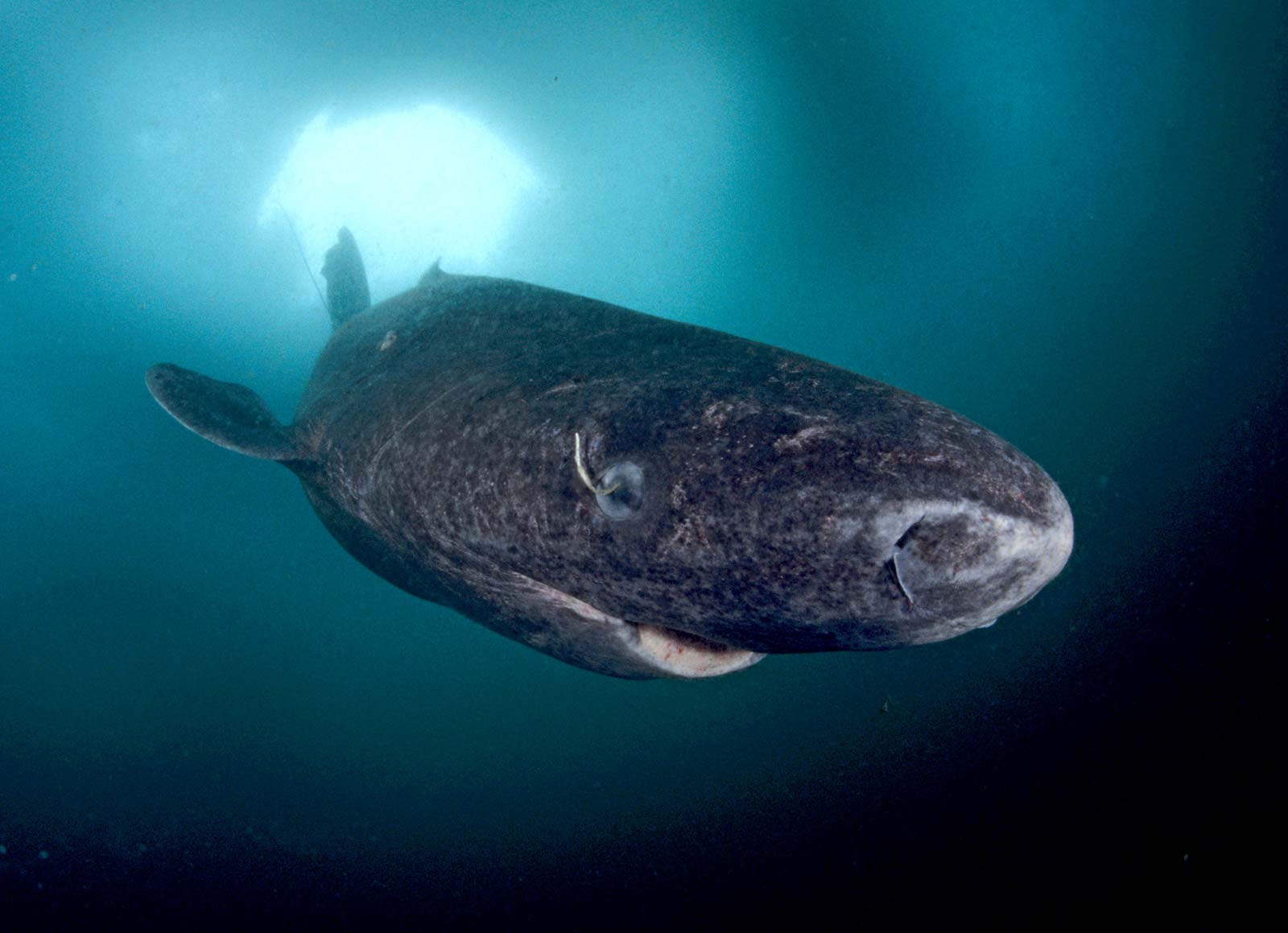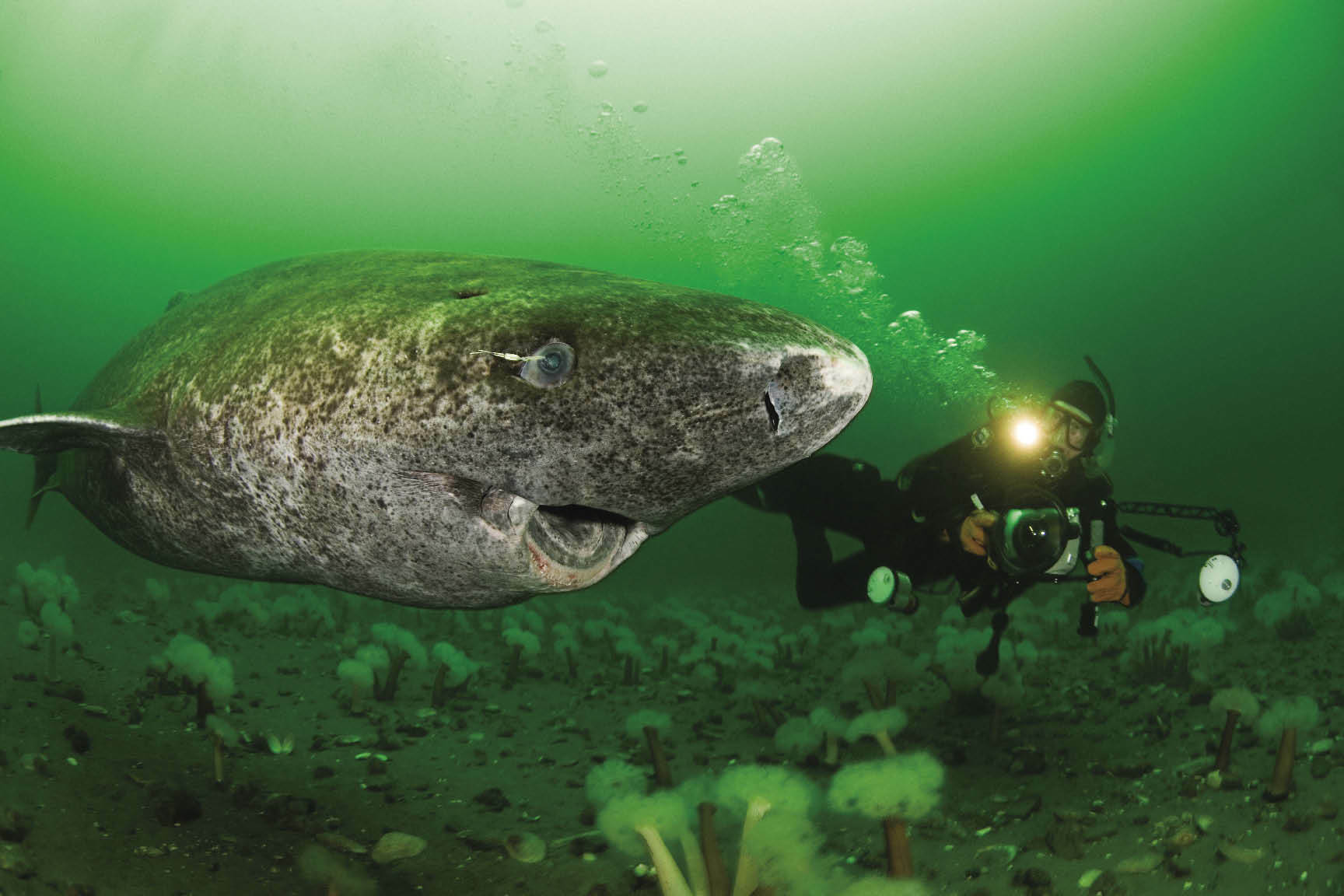
An incredible discovery has been made following research conducted on 28 Greenland sharks — the longest-living vertebrate animal. At the estimated age of nearly 400-years-old, the female Greenland shark has officially set a new record for longevity. Given that this particular shark is the greatest predator in the Arctic seas, gaining insight into their lifespan is of great interest to researchers.
The way in which scientists determine the age of most fish species is by counting the growth layers of calcium carbonate “stones” found in their ears. However, a different approach is needed when analyzing sharks due to their lack of ear stones, as well as calcium-rich tissues necessary for this type of analysis. Through close examination of the eye, the protein found in the lens helps scientists determine when they were developed, with the center of the lens holding the protein developed when in the mother’s womb. By determining the date of these proteins, the approximate age of the shark can be obtained.

In order to obtain the approximate date of when the proteins were laid down, scientists use radiocarbon dating. This technique analyzes the levels of a specific type of carbon, carbon-14, that experiences radioactive decay over time. Further analysis using this data alongside atomic bomb tests allowed for information regarding levels of carbon emitted into the atmosphere during a specific time period. The tests, completed in the 1950s, increased the levels significantly, which ultimately entered the marine food web later in the 1960s.
Through the process of analyzing the radiocarbon dating findings and the knowledge of Greenland sharks, the estimation of the approximate age of the group of sharks was obtained. This study revealed extraordinary information that leaves the female Greenland shark leaps ahead of the oldest elephant in captivity, who died at the age of 86. It also surpasses the oldest vertebrate animal, the bowhead whale, that has been known to live for 211 years.